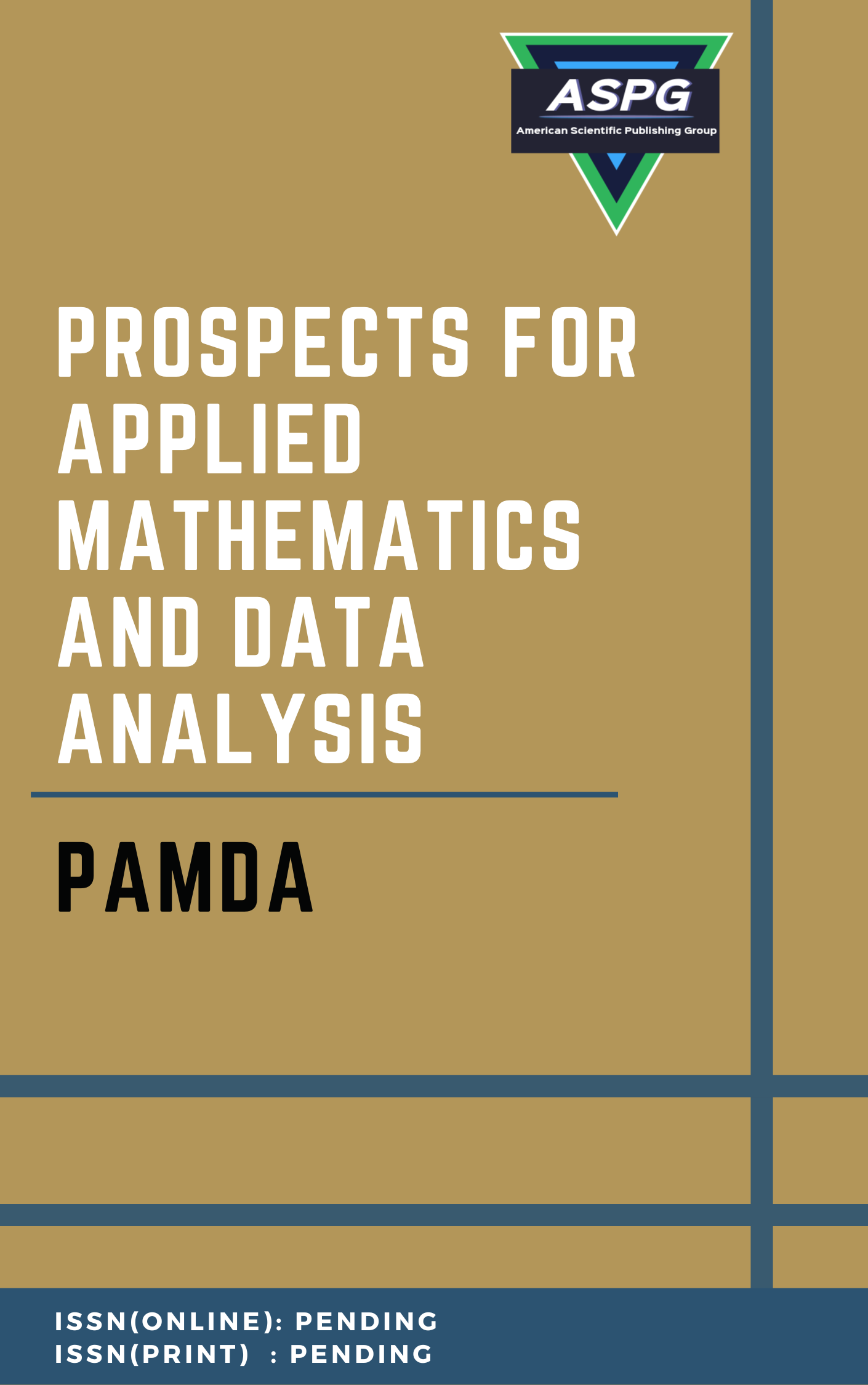

Volume 3 , Issue 1 , PP: 21-28, 2023 | Cite this article as | XML | Html | PDF | Full Length Article
Maissam Jdid 1 * , Florentin Smarandache 2
Doi: https://doi.org/10.54216/PAMDA.030102
The main interest in statistical analysis is to generate a series of random variables that follow the probability distribution in which the system under study operates. In almost all simulation tests, we need to generate random variables that follow a distribution, a distribution that adequately describes and represents the physical process involved in the experiment at That point. During the experiment, it may be necessary to simulate a real and perform the process of generating a random variable from a distribution many times depending on the complexity of the model to be simulated in order to obtain more accurate simulation results. In previous research, we presented a neutrosophical study of the process of generating random numbers and some techniques that can be used to convert these random numbers into variables. Randomness follows the probability distributions according to which the system to be simulated operates. These techniques were specific to probability distributions defined by a probability density function that is easy to deal with in terms of finding the cumulative distribution function and the inverse function of the cumulative distribution function or by calculating the values of this function at a certain value, and in reality, we encounter Many systems operate according to these distributions, which requires techniques other than the techniques presented. Therefore, in this research we will present a neutrosophical study of the approximation technique for generating random variables that follow probability distributions known as a complex probability density function. We will apply this study to find random variables that follow the distribution. Standard natural
Generating neutrosophic random numbers , generating neutrosophic random variables , approximation technique for generating neutrosophic random variables , standard normal distribution.
[1] Florentin Smarandache, Maissam Jdid, On Overview of Neutrosophic and Plithogenic Theories and Applications, Doi :https://doi.org/10.54216/PAMDA.020102
[2] F. Smarandache. Introduction to Neutrosophic statistics, Sitech & Education Publishing, 2014.
[3] Faisal Al-Sharqi, Ashraf Al-Quran, and Zahari Md. Rodzi , Multi-Attribute Group Decision-Making Based on Aggregation Operator and Score Function of Bipolar Neutrosophic Hypersoft Environment, Neutrosophic Sets and Systems, Vol. 61, 2023, pp. 465-492. DOI: 10.5281/zenodo.10428642
[4] Mountajab Alhasan, Malath F Alaswad. A Study of the Movement of a Neutrosophic Material Point in the Neutrosophic Plane by Using a Neutrosophic AH-Isometry, Journal Prospects for Applied Mathematics and Data Analysis, Doi: https://doi.org/10.54216/PAMDA.020101,Vol 2, No 1, 2023.
[5] Mona Gharib, Florentin Smarandache, Mona Mohamed, CSsEv: Modelling QoS Metrics in Tree Soft Toward Cloud Services Evaluator based on Uncertainty Environment, Doi :https://doi.org/10.54216/IJNS.230204, Vol,23, No,2
[6] Said Broumi, S. krishna Prabha, Fermatean Neutrosophic Matrices and Their Basic Operations, Neutrosophic Sets and Systems, Vol. 58, 2023, pp. 572-595. DOI: 10.5281/zenodo.8404536
[7] Mohamed Abdel-Basset, Uncertainty-infused Representation Learning Using Neutrosophic-based Transformer Network, Neutrosophic Sets and Systems, Vol. 58, 2023, pp. 644-657. DOI: 10.5281/zenodo.10028758
[8] Florentin Smarandache, Introduction to Neutrosophic Genetics Doi: https://doi.org/10.54216/IJNS.130103 , Vol 13, No, 1.
[9] Maissam Jdid, Hla Hasan, The State of Risk and Optimum Decision According to Neutrosophic Rules, Doi :https://doi.org/10.54216/IJNS.200107, Volume 20, Issue 1
[10] S. Loganayaki, N. Rajeswari, K. Kirupa, S. Broumi, Optimization of triangular neutrosophic based economic order quantity model under preservation technology and power demand with shortages, Vol. 64 (2024): Neutrosophic Sets and Systems
[11] M. Anandhkumar, H. Prathab, S. M. Chithra, A. S. Prakaash, A. Bobin, Secondary K-Range Symmetric Neutrosophic Fuzzy Matrices, Volume 23, Issue 4, Doi :https://doi.org/10.54216/IJNS.230402
[12] Mohammed Alshikho, Maissam Jdid, Said Broumi, A Study of a Support Vector Machine Algorithm with an Orthogonal Legendre Kernel According to Neutrosophic logic and Inverse Lagrangian Interpolation, Doi : https://doi.org/10.54216/JNFS.050105
[13] Florentin Smarandache, Maissam Jdid, Research on the topics of neutrosophic operations research, https://fs.unm.edu/NeutrosophicOperationsResearch.pdf , Biblio Publishing, Volume (1),2023
[14] Maissam Jdid, Neutrosophic linear models and algorithms to find their optimal solution, Biblio Publishing, ISBN, 978_1 _59973_778_2, USA,2023 https://fs.unm.edu/NeutrosophicLinearModels-ar.pdf
[15] Maissam Jdid, NEUTROSOPHIC TRANSPORT AND ASSIGNMENT ISSUES, Publisher: Global Knowledge’s, ISBN, 978_1 _59973_770_6, USA,2023 https://fs.unm.edu/NeutrosophicOptimization-ar.pdf,
[16] Maissam Jdid, Rafif Alhabib and A. A. Salama, Fundamentals of Neutrosophical Simulation for Generating Random Numbers Associated with Uniform Probability Distribution, Neutrosophic Sets and Systems, Vol. 49, 2022, pp. 92-102 DOI: 10.5281/zenodo.6426375
[17] Maissam Jdid, A. Salama, Using the Inverse Transformation Method to Generate Random Variables that follow the Neutrosophic Uniform Probability Distribution, Doi: https://doi.org/10.54216/JNFS.060202
[18] Maissam Jdid, Rafif Alhabib and A. A. Salama, The Basics of Neutrosophic Simulation for Converting Random Numbers Associated with a Uniform Probability Distribution into Random Variables Follow an Exponential Distribution, Neutrosophic Sets and Systems, Vol. 53, 2023, pp. 358-366. DOI: 10.5281/zenodo.7536049
[19] Maissam Jdid, Said Broumi, Neutrosophical Rejection and Acceptance Method for the Generation of Random Variables, Neutrosophic Sets and Systems, Vol. 56, 2023, pp. 153-166. DOI: 10.5281/zenodo.8194749
[20] Maissam Jdid and Nada A. Nabeeh, Generating Random Variables that follow the Beta Distribution Using the Neutrosophic Acceptance-Rejection Method, Neutrosophic Sets and Systems, Vol. 58, 2023, pp. 139-148. DOI: 10.5281/zenodo.8404445
[21] Maissam Jdid, Florentin Smarandache, and Khalifa Al Shaqsi, Generating Neutrosophic Random Variables Based Gamma Distribution, Plithogenic Logic and Computation Vol. 1 (2024), 16-24, DOI: https://doi.org/10.61356/j.plc.2024.18760, https://sciencesforce.com/index.php/plc/article/view/87
[22] Maissam Jdid, Florentin Smarandache, Generating Neutrosophic Random Variables Following the Poisson Distribution Using the Composition Method (The Mixed Method of Inverse Transformation Method and Rejection Method), Neutrosophic Sets and Systems, Vol. 64, 2024, pp. 132-140. DOI: 10.5281/zenodo.10703089
[23] Maissam Jdid, Florentin Smarandache, The Box and Muller Technique for Generating Neutrosophic Random Variables Follow a Normal Distribution, Volume 23, Issue 4,Doi:https://doi.org/10.54216/IJNS.230406
[24] Alali. Ibrahim Muhammad, Operations Research. Tishreen University Publications, 2004.
[25] Bukajh JS -. Mualla, W... and others-Operations Research Book translated into Arabic - The Arab Center for Arabization, Translation, Authoring and Publishing -Damascus ,1998.